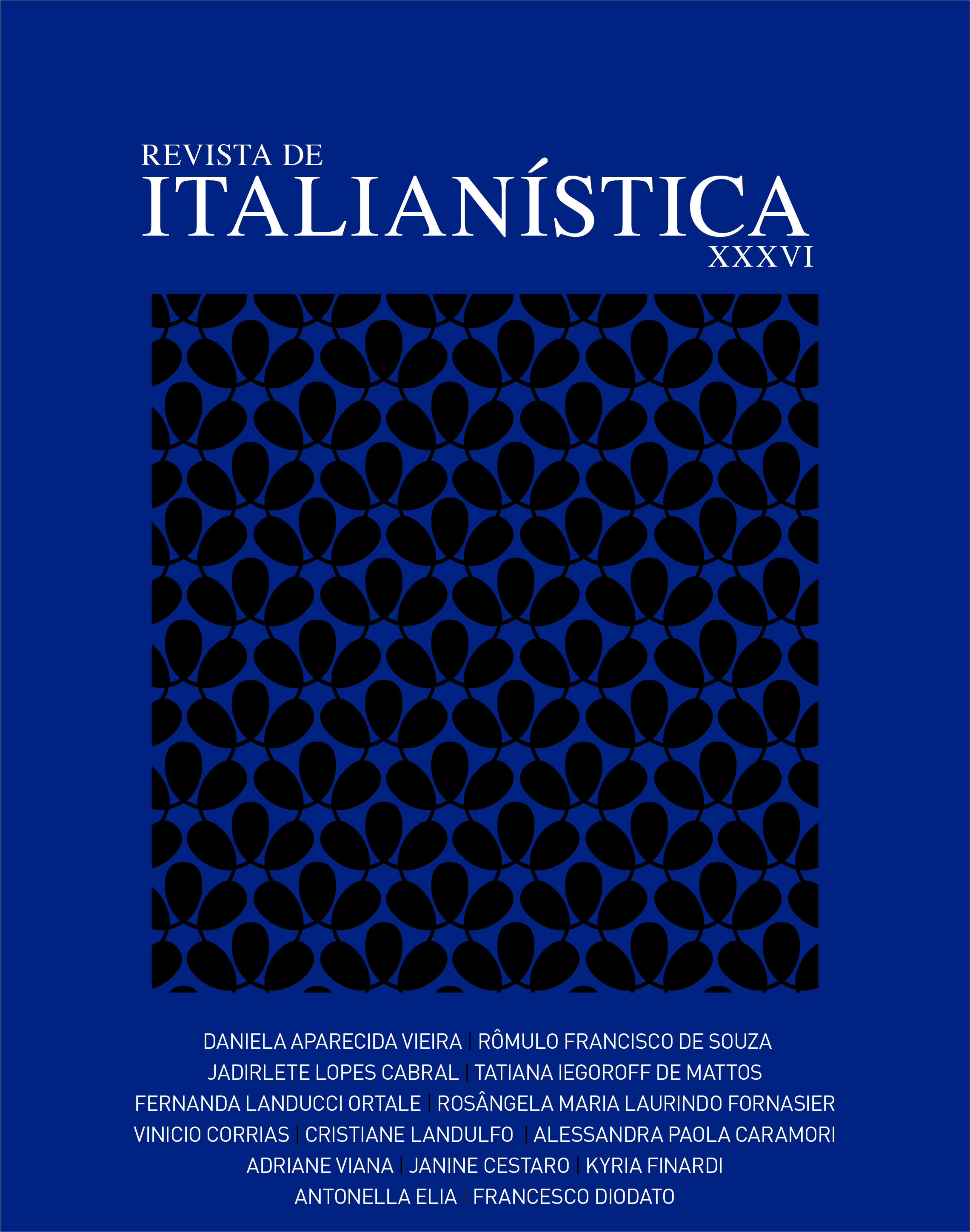Towards the authoritative teacher: reasons and modalities
DOI:
https://doi.org/10.11606/issn.2238-8281.i36p96-110Keywords:
Authoritative teacher, Neuroscience, Adolescents, Loving teacher, Learning environment, Researcher student, Rewards and punishmentsAbstract
This paper aims to shed light on some practices that can help teachers enable every student to reach his or her full potential. After a review of some possible reasons why some students behave in a non-edifying way, an exposition of the reasons why teachers should prefer an authoritative educational style to an authoritarian, permissive, and even democratic one and a definition of loving teacher follow. The paper also contains a consideration of the rational persuasion technique, the learning environment, the figure of the research student, and the reward and punishment system, which should, ideally, be replaced with a consequences system. In this paper, numerous suggestions from neuroscience have also been added. In particular, we discuss the care teachers should reserve for the students’ amygdala, since it plays an important role in students’ emotions. Inadequate consideration of this aspect of students’ physiology could lead students to refuse to learn with a particular teacher. The issue of the peculiarity of the adolescent brain is also addressed. This is even valid if, as in the case of the writer, one is dealing with university students, because, biologically speaking, their brains, even at their age, are not yet mature.
Downloads
References
BROPHY, J. Teaching Problem Students (Edizione paperback. Originariamente pubblicato nel 1996). New York, NY: The Guilford Press, 2003.
CATIZONE, P. Produzione libera orale: un’attività comunicativa. In: Bollettino Itals. 2004, 5. Disponibile su: <https://www.itals.it/articolo/produzione-libera-orale-unattività-comunicativa> Accesso: 03/10/2018.
CLANDFIELD, L.; PRODROMOU, L. Dealing with Difficulties. Solutions, strategies and suggestions for successful teaching. Peaslake, Regno Unito: Delta Publishing, 2007.
COLLINS, S. Neuroscience for Learning and Development. How to apply neuroscience and psychology for improved learning and training. Londra, Regno Unito: Kogan Page, 2016.
COZOLINO, L. The Social Neuroscience of Education: Optimizing Attachment and Learning in the Classroom. New York, NY: W. Norton & Company, 2013.
DAFFI, G. Così impari. Guida alla severità intelligente per genitori e insegnanti. Trento, Italia: Edizioni Erickson, 2011.
D’ALONZO, L. Come fare per gestire la classe nella pratica didattica. Guida base. Firenze, Italia: Giunti Scuola, 2012.
DOGLIO, M. Uscirne vivi 2. Manuale per insegnanti. Milano, Italia: Lupetti, 2009.
DÖRNYEI, Z.; MURPHEY, T. Group Dynamics in the Language Classroom. New York, NY: Cambridge University Press, 2003.
DWECK, C. S. Mindset: The New Psychology of Success (Edizione paperback. Originariamente pubblicato nel 2007 da Random House). New York, NY: Ballantine Books, 2008.
FIORE MONTESSORI SCHOOL. Positive Discipline: Natural and Logical Consequences. In: The Blog. 2012. Disponibile su: <http://fioremontessori.com/positive-discipline-natural-and-logical-consequences/> Accesso: 03/10/2018.
GORDON, T. Insegnanti efficaci. Trad. N. Lilla. Firenze, Italia: Giunti, 1991.
HUMPHRIS, C. Come valutare a che punto si trova lo studente di una lingua straniera? In: Bollettino Dilit. 1984, 3. Disponibile su:
<https://www.dilitformazioneinsegnanti.it/bollettini/valutazione/come-valutare-a-che-punto-si-trova-lo-studente-di-una-lingua-straniera/> Accesso: 03/10/2018.
HUMPHRIS, C. Perché gli studenti non s’impegnano di più? In: Atti del 9o Seminario internazionale DILIT “Parlare”. 1997. Disponibile su: <https://www.dilitformazioneinsegnanti.it/atti/1997-9-seminario-parlare/perche-gli-studenti-non-simpegnano-di-piu/> Accesso: 03/10/2018.
HUMPHRIS, C. Che cosa stanca di più: lo studio o la noia? In: Bollettino Dilit. 2004, 2. Disponibile su: <https://www.dilitformazioneinsegnanti.it/bollettini/stranieri-nella-scuola-pubblica/che-cosa-stanca-di-piu-lo-studio-o-la-noia/> Accesso: 03/10/2018.
KOHN, A. Punished by Rewards. The Trouble with Gold Stars, Incentive Plans, A’s, Praise, and Other Bribes. New York, NY: Houghton Mifflin Harcourt Publishing Company, 1993 (2a ed.).
LEDOUX, J. The Emotional Brain: The Mysterious Underpinnings of Emotional Life (Edizione paperback. Originariamente pubblicato nel 1998 da Weidenfeld & Nicolson). Londra, Regno Unito: Phoenix, 1999.
MARIANI, U.; SCHIRALLI, R. Nostro figlio. Dal concepimento all’adolescenza come aiutarlo a crescere con il metodo dell’educazione emotiva. Milano, Italia: Arnoldo Mondadori Editore, 2014.
MCMANUS, M. Troublesome Behaviour in the Classroom: Meeting Individual Needs (2a ed.). New York, NY: Routledge, 1995.
MILANI, I. L’arte di insegnare (2a ed.). Milano, Italia: Antonio Vallardi Editore, 2014.
NATION, P. What Should Every EFL Teacher Know? Seul, Corea del Sud: Compass Publishing, 2013.
ROSENBLUM-LOWDEN, R.; LOWDEN KIMMEL, F. You Have to Go to School... You’re the Teacher! (3a ed.). Thousand Oaks, CA: Corwin Press, 2008.
SAITŌ, I. Manga. Omowazu tameshite mitaku naru shinrigaku nyūmon. [Manga. Libro di psicologia per principianti che inconsapevolmente ci fa venire voglia di mettere in pratica le tecniche illustrate]. Tokyo, Giappone: Takarajimasha, 2016.
SCUOLA DI BARBIANA. Lettera a una professoressa. Quarant’anni dopo. Firenze, Italia: Libreria Editrice Fiorentina, 2007.
SOUSA, D. A. How the Brain Learns. Thousand Oaks, CA: Corwin Press, 2017 (5a ed.).
YŪKI, Y. (a cura di). “Naruhodo!” to wakaru. Manga. Hajimete no uso no shinrigaku. [Un libro convincente. Manga. Psicologia delle bugie per principianti]. Tokyo, Giappone: Seitōsha, 2016.
WHITMAN, G.; KELLEHER, I. Neuroteach; Brain Science and the Future of Education. London, Regno Unito: Rowman & Littlefield, 2016.
WOLFE, P. Brain Matters. Translating Research into Classroom Practice (2a ed.). Alexandria, VA: ASCD, 2010.
ZULL, J. E. The Art of Changing the Brain. Enriching Teaching by Exploring the Biology of Learning. Sterling, VA: Stylus Publishing, 2002.
Downloads
Published
Issue
Section
License

This work is licensed under a Creative Commons Attribution-NonCommercial-NoDerivatives 4.0 International License.
A revista retém os direitos patrimoniais dos artigos e os publica simultâneamente sob uma Licença Creative Commons-Atribuição-Não Comercial-Sem Derivações.



